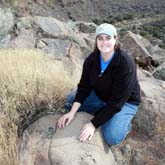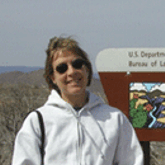Summary
Ecologists have realized that many previously-considered "pristine" ecosystems have been altered by past land use activities. While large-scale, post-colonial land use changes are expected to some extent to leave an ecological imprint, more surprising has been the discovery that prehistoric human communities, even ones that disappeared from the landscape centuries ago, can have significant impacts on the structure and functioning of modern ecosystems. This research builds upon an ongoing collaboration between ecologists and archaeologists at ASU focused upon the cultural and ecological effects of recursive human-environment interactions. In this work, we are asking, Did prehistoric agricultural activity leave long-lasting impacts on ecological properties and processes? We are exploring plant communities, deep soil chemistry, and surface water dynamics in two regions of central Arizona that supported agroecologically active and well studied populations of humans until 1200-1400 AD. Our first site is at Cave Creek in the Sonoran desert of the northern Phoenix basin, which supported relatively large human populations for approximately four centuries using both irrigated and dry land farming techniques. Our second site is at Perry Mesa, located at higher elevation in the semi-arid desert grasslands of Agua Fria National Monument (AFNM). Populations at Perry Mesa were smaller and more ephemeral than at Cave Creek, and were supported by only dry land agricultural fields and house gardens.



 Matt Camba
Matt Camba
 Melissa Kruse-Peeples
Melissa Kruse-Peeples
 Sharon Hall
Sharon Hall
 Katherine Spielmann
Katherine Spielmann